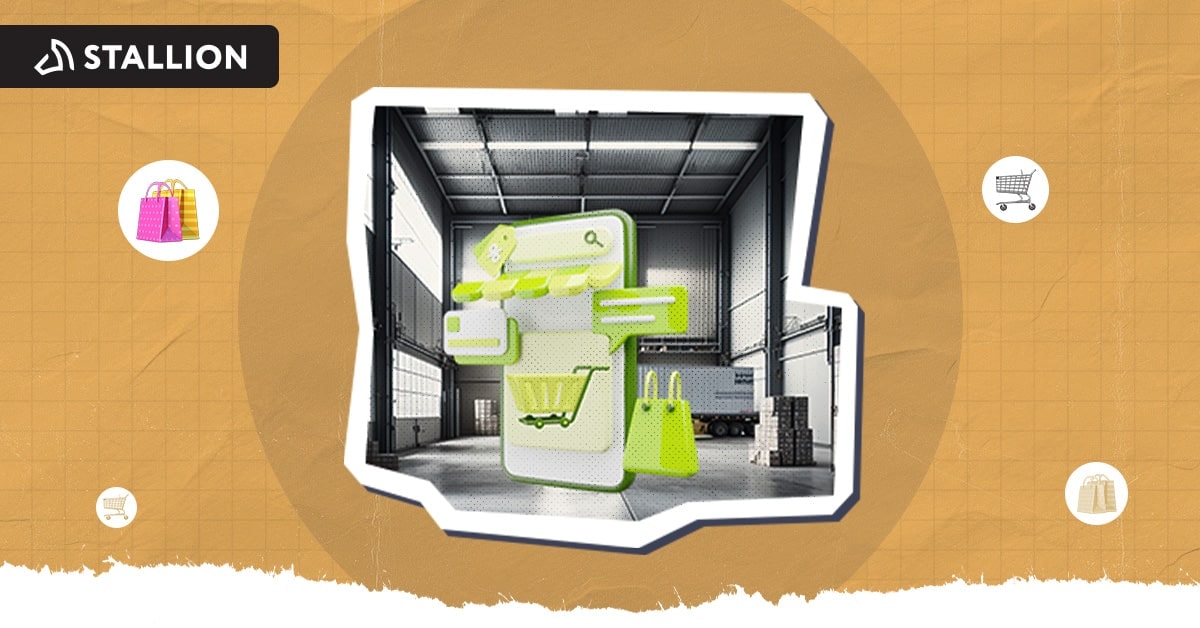
How do you efficiently store, manage, and ship your growing inventory? You might have asked yourself this question a couple of times. An eCommerce warehouse is a modern solution to this dilemma.
This blog will help you understand eCommerce warehouses and how they can benefit your business. Whether you're outgrowing your garage storage or looking to optimize your existing fulfillment process, understanding eCommerce warehousing could be the key to your next phase of growth.
An eCommerce warehouse is a specialized storage facility for online retail operations. It uses technology to complete certain tasks for online businesses, such as:
They are quite different from traditional warehouses. They don't handle bulk shipments to retail stores. Instead, they are set up for picking and packing individual items, managing returns, and integrating with online shopping platforms to provide up-to-date inventory tracking.
An eCommerce Warehouse Management System (WMS) is software that helps online businesses keep track of their products and manage warehouse operations. Think of it as a digital control that handles everything.
This tool knows where every item is and makes sure orders get packed and shipped correctly. It also connects with your online store to complete other tasks, such as:
These systems save time and reduce mistakes by replacing paper records and manual tracking.
This software is a tool used every time you store inventory. You can get different information like:
Benefits include fewer out-of-stock situations, less wasted storage space, and better inventory accuracy. It can save you money by helping you keep just the right amount of products on hand.
Some of the popular inventory management tools are TradeGecko and Zoho Inventory.
This type handles everything from when a customer clicks "buy" to when their package arrives at their door. It organizes orders by priority, assigns them to warehouse staff, and tracks them through packing and shipping.
The software also handles special instructions like gift wrapping or express shipping. Some of the benefits order management tools can offer are:
Order Pearl and Order Desk are just some of the more popular platforms.
With thousands of packages, it's quite challenging to locate which is which. This software creates efficient picking routes for warehouse managers and workers and tells them exactly where to find each product.
It can group similar orders together to save time and may use barcode scanning to ensure accuracy. Some systems even work with robots or conveyor belts for faster picking. Having a picking and packing process will provide numerous advantages, such as:
Popular tools you can try are SortlyPro and Packsize.
Whether you have your warehouse or just renting one, having the right management software can help you thrive in your business. However, with plenty of options available, things can be confusing.
Let's walk through what you should consider to make sure you're making a smart decision.
If you have 20 to 100 orders per day, it's best to look for user-friendly software with basic features like:
Also, consider using cloud-based solutions with a monthly subscription to keep costs low. Many options are available for small businesses offering the above features without overwhelming complexity. However, always focus on software that's easy to learn and provides good customer support for beginners.
A business processing 100 to 1000 orders daily is considered a mid-sized business. If you reach this order quantity, you'll need more complex software to handle multiple sales channels, locations, and advanced reporting.
Additionally, look for systems that offer features like:
Remember, integration capabilities with various platforms become crucial at this stage.
If you have grown your business and now handle 1000+ orders daily, you are now considered an enterprise. Therefore, you'll need sophisticated systems to manage complex operations across multiple warehouses and countries.
These systems offer advanced features like:
They should handle multiple currencies, languages, and tax systems.
Each warehouse equipment costs differently. Check the table below to see how much it would cost you and the features you usually have.
| Business Model | Cost | Common Features |
| Small Businesses | USD 50 - USD 200 | Inventory tracking, order processing |
| Mid-sized Businesses | USD 200 - USD 1000 | Multiple-user access |
| Enterprise Level | USD 1000 - USD 5000+ | Advanced automation, custom solutions |
In addition to the software, there are other fees you might also consider, such as:
| Services | Costs |
| Setup Fees | USD 500 to USD 5000 |
| Training | USD 100 to USD 200 per hour |
| Integration Costs | USD 500 to USD 2000 |
| Extra User License | USD 50 to 200 per user |
Remember, most providers offer different pricing tiers. Some may charge you based on order volume, while others will be based on inventory size rather than flat monthly fees. It's worth getting quotes from several providers to find the best fit for your budget.
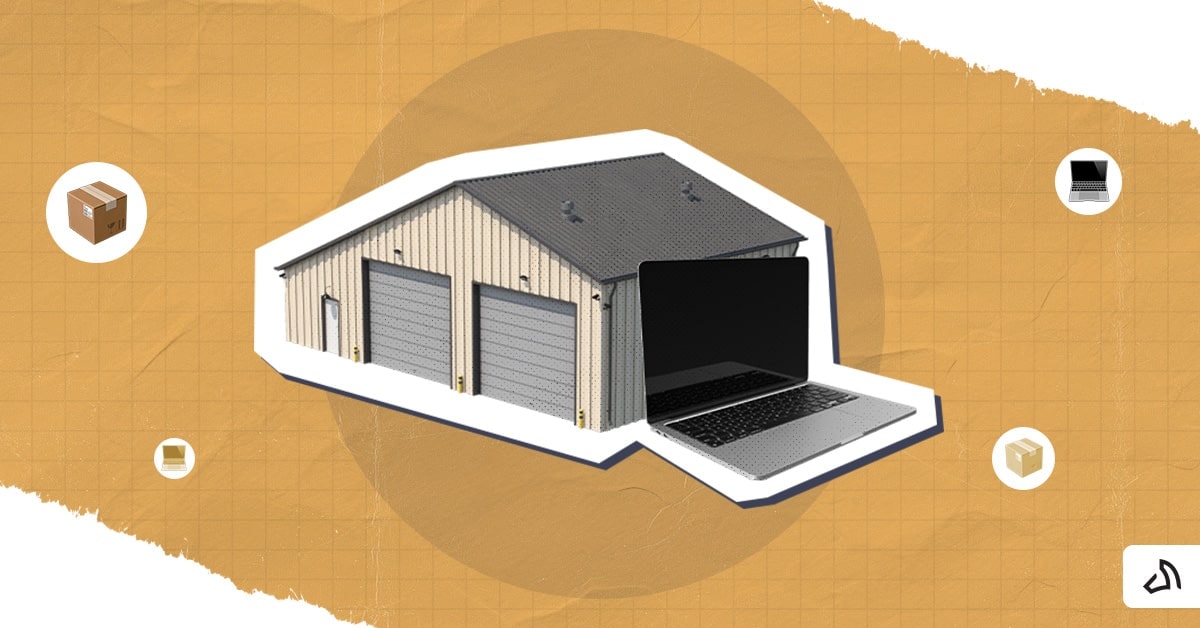
Not all warehouses are the same when it comes to storing and shipping products for your online business. Each type serves different needs and has its own advantages. Let's look at the main types of warehouses that online sellers commonly use in Canada.
These specialized warehouses handle the entire order fulfillment process from start to finish. When a customer orders, a fulfillment center staff picks, packs, and ships the items directly to them.
They typically offer services like inventory management, real-time stock tracking, and returns processing. Many fulfillment centers also provide integrated technology that connects with your online store.
It means that you can get automatic updates about inventory levels and order status. This makes them ideal for businesses wanting to outsource their logistics operations.
Distribution centers focus on moving products quickly rather than long-term storage. Their process somehow goes like this:
These centers often handle bulk orders and B2B shipping. They're designed for high-speed warehouse operations and typically aim to move inventory out within days or weeks of receiving it.
By its name alone, "Private, " it is owned and operated by a single company for their exclusive use. This gives businesses complete control over storage, handling, and shipping processes.
In addition, they have the freedom to achieve certain goals, such as:
Note that choosing this type of warehouse will require significant investment. However, private warehouses offer maximum flexibility, which you can tailor to your specific business needs. This makes them suitable for large companies with consistent storage requirements.
Public warehouses rent space and services to multiple businesses on a pay-as-you-go basis. Like private warehouses, they offer flexible storage solutions. The only difference is that no long-term commitment to owning a facility exists.
In addition, these warehouses typically provide basic services like storage, handling, and shipping. However, instead of charging you for the entire warehouse, they charge you based on the space used or the number of pallets stored.
They're particularly useful for seasonal businesses, startups, or companies testing new markets.
These specialized facilities focus on efficiently managing returned merchandise. This means that returns processing warehouses handle all sorts of returns-related tasks, including:
Staff are trained to assess product condition, process refunds, and manage warranty claims. These warehouses have dedicated areas for testing electronics and cleaning items. Plus, they have systems to track reasons and identify patterns in customer returns.
This technology makes it easier to adjust the product quality or the entire process itself to prevent such return cases from happening again.
Unlike others, a cross-docking warehouse aims to lessen storage time by transferring incoming shipments directly to outgoing transport. Products typically spend less than 24 hours in these facilities.
When the items arrive on one side of the warehouse, they sort and reorganize them based on destination. Then, they immediately move the products to outbound trucks on the other side. This system works well for perishable goods and pre-sold merchandise requiring quick delivery.
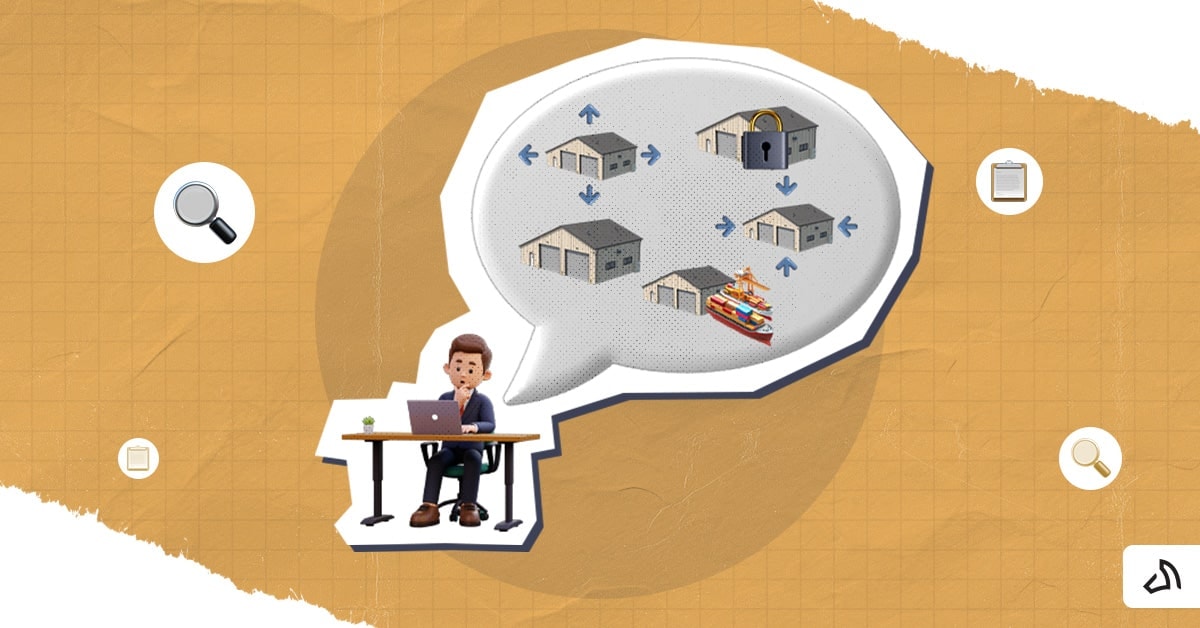
Choosing the perfect warehouse for your online business can feel overwhelming, but it doesn't have to be. Finding the right eCommerce warehouse requires a lot of consideration. You must weigh the size, cost, and whether it has all the features your business needs to grow.
Let us learn the best practices you should consider when picking a warehouse that's right for you.
The perfect eCommerce warehouse is more than just a storage space. When choosing the right warehouse, start by looking at your business basics.
These questions can help you narrow down your options to avoid overwhelming yourself.
Additionally, consider seasonal changes, like holiday rushes. These are the times when a sudden spike in orders occurs. You want to make sure that you can keep up with the demands. Don't forget about special packaging needs or if you need help with returns.
This homework will help you find a warehouse that fits just right.
Where your warehouse sits matters a lot. Before choosing a warehouse, consider where most of your customers live. You'll want to be close to them to save on shipping costs and delivery times. So, check if the warehouse is near major highways, airports, or shipping hubs.
Apart from that, consider the Canadian weather, too, because some areas might have tricky winter delivery times. Also, look at whether staff can easily get to work there and if trucks can easily access the loading docks.
As mentioned, every warehouse uses a different system. The right one should work smoothly with your online store's software. So, check if their systems can connect with your shopping cart and automatically update inventory.
Look for a smart warehouse with real-time tracking, easy report-making, and good inventory management tools. Also, make sure they use modern scanning and tracking systems to avoid lost items.
Simply put, the better the tech they use in eCommerce integration, the fewer your headaches.
Look carefully at all the costs—not just storage fees. There might be hidden fees you want to avoid. Don't forget to ask about:
Some warehouses charge by pallet space, others by shelf space or number of items. So, make sure to get clear answers about what services are included and what costs extra.
Remember, the cheapest option isn't always the best value for your money.
Do your homework on the warehouse's track record. Don't just rely on what they say. It's better to ask for references and talk to other businesses using their services. If you can, look for reviews online and check how long they've been in business.
Find out their order accuracy rate and how they handle mistakes. Check if they have backup plans for power outages or system failures. A reliable warehouse partner can make or break your business's reputation.
Making the jump from storing products in your garage to using a professional warehouse is a big decision for any online business. Yes, eCommerce warehouses can solve these headaches. However, they also come with their own costs and considerations.
Before you move, let's consider the pros and cons of using a warehouse for your business and when it makes sense to take this leap.
Every growing business reaches a point where storing products at home just doesn't cut it anymore. So, let's look at the bright side of moving your inventory to a professional warehouse.
Professional warehouses have everything set up to ship orders quickly and accurately. Trained staff use modern scanning systems and organized shelving to find products. Therefore, they don't have to search through boxes individually.
They can handle dozens or even hundreds of orders daily without breaking a sweat. Plus, they have relationships with shipping companies and often get better rates. This means your customers get their orders faster and with fewer mistakes.
As your business grows, a warehouse grows with you. For example, the holidays are a busy season. However, you don't have to worry about where to put extra inventory. You only need to send it to the warehouse.
There's space waiting when you want to add new products. You can also scale down during slower periods without paying for a space. This flexibility means your storage can match your business needs, whether you're having a slow month or your biggest sale.
Paying for warehouse space might seem expensive initially. However, it saves money in the long run. You're not paying for storage space, staff, or shipping supplies. Warehouses get bulk discounts on packaging materials and shipping rates, which they pass on to you.
You also save time! Instead of spending hours packing boxes—you can focus on growing your business. Plus, you won't need to rent a bigger home or office just for storage.
While warehouses offer many benefits, they're not without their drawback. Before you sign any contracts, it's important to understand the challenges that come with warehouse storage. Let's explore some of the potential downsides to help you make an informed decision.
When starting or running a small business, warehouse costs can quickly eat up your profits. Most warehouses have minimum monthly fees, storage costs, and handling charges for each order.
In addition, there are also pick and packing fees. Sometimes, you will be charged just for counting your inventory. If you're shipping enough orders each month, these might cost more than doing everything yourself from home.
It's especially tough when you're just building your customer base.
Putting your products in someone else's hands means giving up some control. You can't personally check each package before it goes out. You only have to trust warehouse staff to handle your products carefully.
So, if the warehouse makes a mistake, your customers might probably blame you. Suppose the warehouse has computer problems or staff shortages. The customer orders might be delayed. You're also stuck if they suddenly raise prices or change their services.
Unfortunately, all of these situations can affect your business and ruin your reputation.
Getting your online store to talk smoothly with the warehouse system can be tricky. You might need to update your website or buy new software to connect everything properly. Some warehouses use older systems that don't work well with modern online stores.
Training your team to use new software takes time, and fixing technical problems can be frustrating. Plus, you'll need to learn new processes for managing your inventory.
Choosing the right eCommerce warehousing solution is crucial for your success. Yes, it can be overwhelming at first. However, taking time to understand your needs, research options, and select the right management systems can transform your logistics operations.
Remember, the goal is to find a solution that not only fits your current needs but can also grow with your business. Start small if needed, test different systems, and scale up as your business expands.
With the right warehouse solution in place, you'll be well-positioned to meet your customers' expectations and drive your business forward.
Transform your eCommerce fulfillment operations with Stallion. Why settle for basic warehousing when you can leverage our cutting-edge facilities that deliver 99.9% accuracy and lightning-fast processing speeds? Join the hundreds of successful Canadian businesses who trust us to be the backbone of their eCommerce operations.
Aman looks after the content marketing department at Stallion Express. He is passionate about helping businesses grow by providing informative and up-to-date trends in the eCommerce industry. Outside the office, you can find him on the soccer field cheering on Real Madrid.
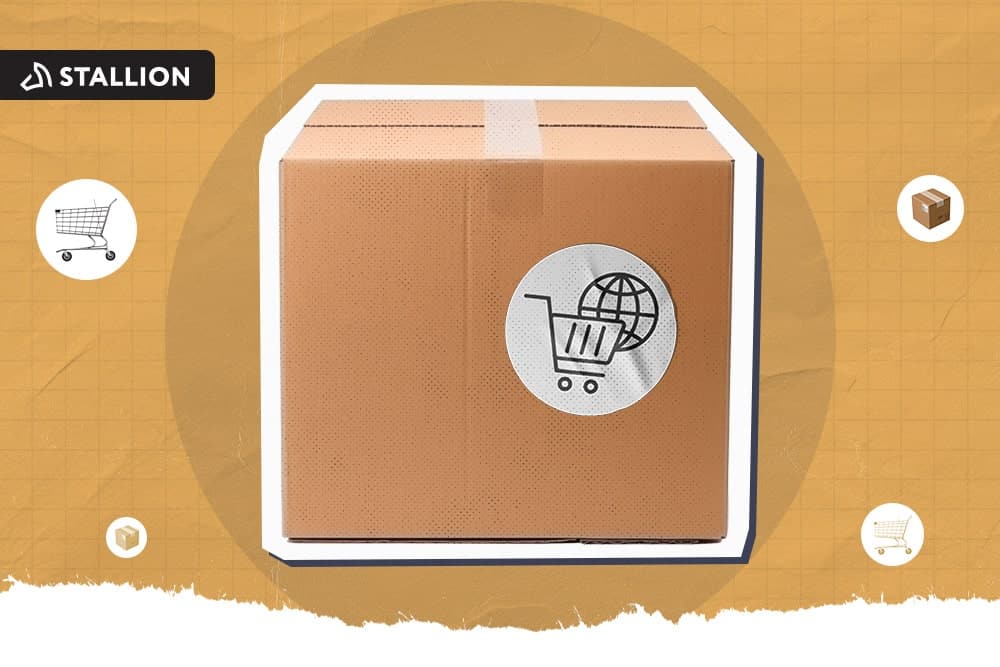
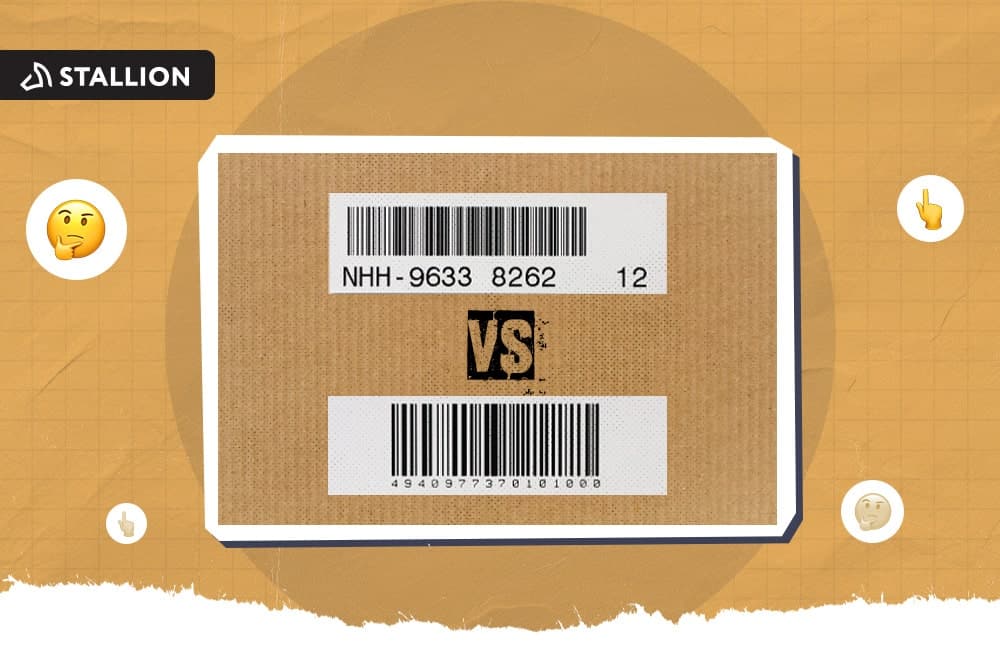
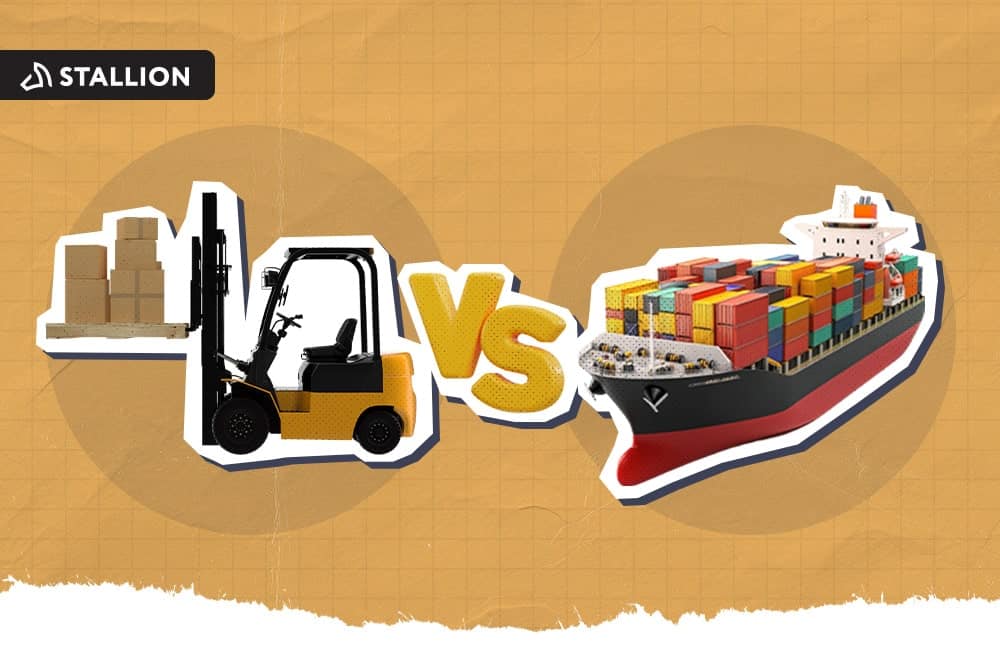
Can our fellow Torontonians relate?
-
#smallbusiness #business #entrepreneur #socialmedia #shipping #ecommerce #canadianecommerce #shopify #poshmark #b2b #saas #etsy #ebay #canada #canadiansmallbusiness #shoplocalcanada #entrepreneur
#toronto

Here’s your quick hassle free shipping from 🇨🇦 to 🇺🇸 as a business owner!
-
Any questions?! Leave them 👇🏻 and save this video so you don’t forget!
-
#smallbusiness #business #entrepreneur #socialmedia #shipping #ecommerce #canadianecommerce #shopify #poshmark #b2b #saas #etsy #ebay #canada #canadiansmallbusiness #shoplocalcanada #entrepreneur

Meet @drinkbenny a 🇨🇦 female founded energy drink brand! Instead of focusing on their products, they’re taking a unique approach by hosting in person events in different Canadian cities to offer an experience for their community 🧡
-
What are your thoughts on in person events? 💭
-
#smallbusiness #business #entrepreneur #socialmedia #shipping #ecommerce #canadianecommerce #shopify #poshmark #b2b #saas #etsy #ebay #canada #canadiansmallbusiness #shoplocalcanada #entrepreneur

Do you know the difference between DDU and DDP when shipping internationally 🌏 ?
-
Questions? Leave them below! 👇🏻
-
#smallbusiness #business #entrepreneur #socialmedia #shipping #ecommerce #canadianecommerce #shopify #poshmark #b2b #saas #etsy #ebay #canada #canadiansmallbusiness #shoplocalcanada #entrepreneur

Here’s a quick hack to save time from choosing multiple postage options
↪️ Turn on the lowest postage rate automation to save you time!
-
Questions? Leave them below! 👇🏻
-
#smallbusiness #business #entrepreneur #socialmedia #shipping #ecommerce #canadianecommerce #shopify #poshmark #b2b #saas #etsy #ebay #canada #canadiansmallbusiness #shoplocalcanada #entrepreneur
